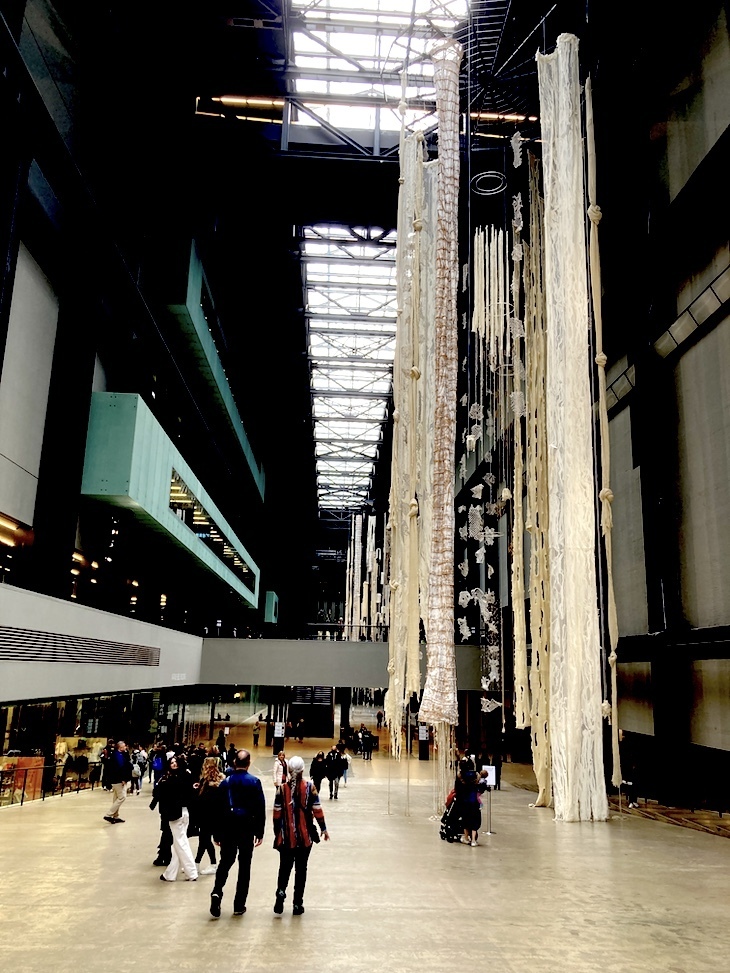
It's Andes-on-Thames... or Andes-from-the-Thames... in Tate's new Turbine Hall commission.
London's most capacious gallery has a new commission in place. Chilean artist Cecilia Vicuña has filled Tate Modern's Turbine Hall with a multistorey artwork that reflects Andean traditions while looking to the challenges of the future. And it's all plucked from the Thames.
Brain Forest Quipa, as it's called, doesn't look especially promising from afar. Bleach-white threads, ropes, netting and goodness knows what else dangle from the roof in two great clumps. But get closer, put your phone away, and let this work wash over you. Hidden depths are revealed.

This is undeniably one of those artworks where it pays to read the label. Even at face value, there is a certain hypnotic, attractive quality to the work, but its deeper meanings are impossible to descry without a bit of genning up.
"In the Andes people did not write," we're told, "they wove meaning into textiles and knotted cords. Five thousand years ago they created the quipu (knot), a poem in space, a way to remember, involving the body and the cosmos at once."

Vicuña brings this ancient tradition into the turbine hall in a big way. A very big way. Her twin quipu clumps hang 27 metres from the ceiling, one near the entrance ramp and the other towards the back of the hall. The knotted works encode "an act of mourning for the destruction of the forests, the subsequent impact of climate change, and the violence against Indigenous people".
But there's a local dimension, too. The drawn-out materials from which the quipus are composed were mudlarked from the Thames by women from local Latin American communities. Found objects, tangled wool, plant fibres, rope and cardboard are all bound together to form an installation that is part London, part Andean, but speaks to issues from all over the Earth.

A "sound quipu" — basically a recording of indigenous sounds and rhythms — adds aural interest as we walk around and between the strands. This is what makes the artwork 'work'. Without the soundtrack, the dangling objects are a curiosity, but not one to stir emotion or reflection. The South American rhythms and natural sounds help establish the context from which the work draws inspiration. It reinforces a sense of loss, of disappearing traditions and stolen lands.

A nearby screen, almost hidden away beneath the stairs, provides a "digital quipu", which adds still more context by showing us other communities whose land is threatened.
Brain Forest Quipu lacks the visual immediacy of other recent commissions, such as Anicka Yi's floating jellyfish drones or Kara Walker's lactating, shark-infested fountain of anti-colonialism. This is an artwork that reveals itself gradually, as you walk among the pendant strands and sway to the mesmeric sonics. It's ultimately a richer experience, so long as you take the trouble to stop, reflect and absorb (and read the label).
Hyundai Commission: Brain Forest Quipu by Cecilia Vicuña is a Tate Modern until 16 April 2023. Entrance is free. All images by the author.




